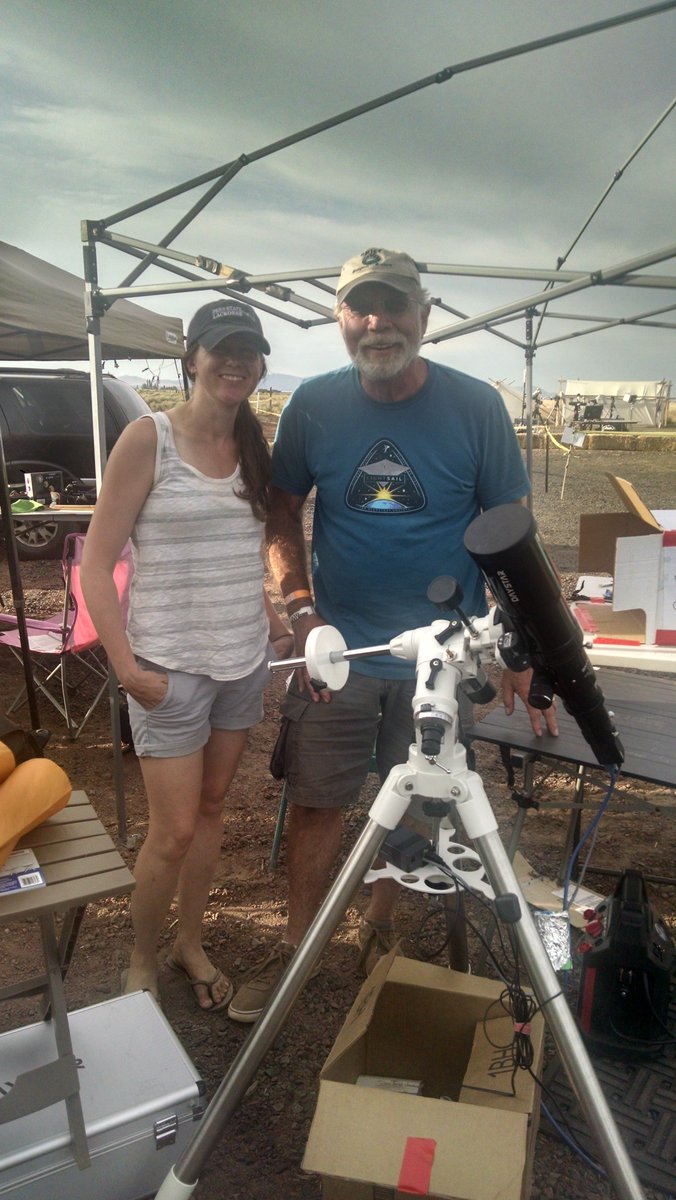




In January 2016, Magnolia Consulting began working with the National Solar Observatory to evaluate the NASA- and NSF-funded Citizen CATE Experiment, which prepared citizen scientists across the path of totality to capture images of the solar corona during the August 2017 solar eclipse. Beth, one of our evaluators, was on the ground with a Citizen CATE team on August 21 and wrote the following account of her experience.
The Citizen CATE project had teams placed along the path of totality from Oregon to South Carolina. Each team had one of the project’s 68 identical telescopes, which were equipped with cameras and software to take images of the sun during the eclipse. As part of our evaluation of the project, I was one of the thousands of people who descended on Madras, Oregon—one of the best viewing spots in the country—on August 21st.
The Citizen CATE team had set up in the parking lot of the Erickson Aircraft Collection, a museum of World War II aircraft. As the moon made first contact with the sun, the citizen scientists prepared to record their images. The preparations were vital because each Citizen CATE team had only one chance to record the eclipse. The nervous excitement of the Madras team was palpable in the moments leading up to totality.
After all the preparations, the moment came. A citizen scientist announced totality, and after a short cheer, the earth became eerily quiet and the sky turned brilliant purple and orange, resembling twilight at 10:20 in the morning. The recording began, and the citizen scientists reverently stood alongside the rest of the crowd as the earth felt a serene stillness. My observations halted at this point. The power of the phenomenon took precedence, and for those two minutes and two seconds, there was no evaluation, there were no scientists, there were no crowds of people, there was only the moon and the sun as they danced across the sky. Nature was the ultimate observation as time seemed to stand still.
As the sun began to emerge again, the stillness was broken. The citizen scientists went back into action, and the crowd resumed its cheers. Awoken from nature’s trance, I noticed so many things that had been going on around me. Skydivers were drifting closer to earth after having the best seats in the house. A couple was hugging after a very well-timed marriage proposal was made and accepted. And importantly, a camera had been silently recording the sun’s corona during totality.
The pressure was on at this point—had the citizen scientists succeeded? Had they captured the images? In the moments following totality, one citizen scientist said that he had observed the camera stopping, for no apparent reason, at 103 seconds instead of recording for the full 123 seconds. More nerve-racking still, the team struggled to find the data on their computer for a few intense moments. Once it was found, the team breathed a sigh of relief, completed the checklist to back up the data, and successfully uploaded the images.
While the team is still not sure why the camera stopped or whether researchers will feel that the cirrus clouds impacted the quality of the data, the images I was privy to were breathtaking and the experience was amazing. Now I’m ready for the 2024 eclipse!

